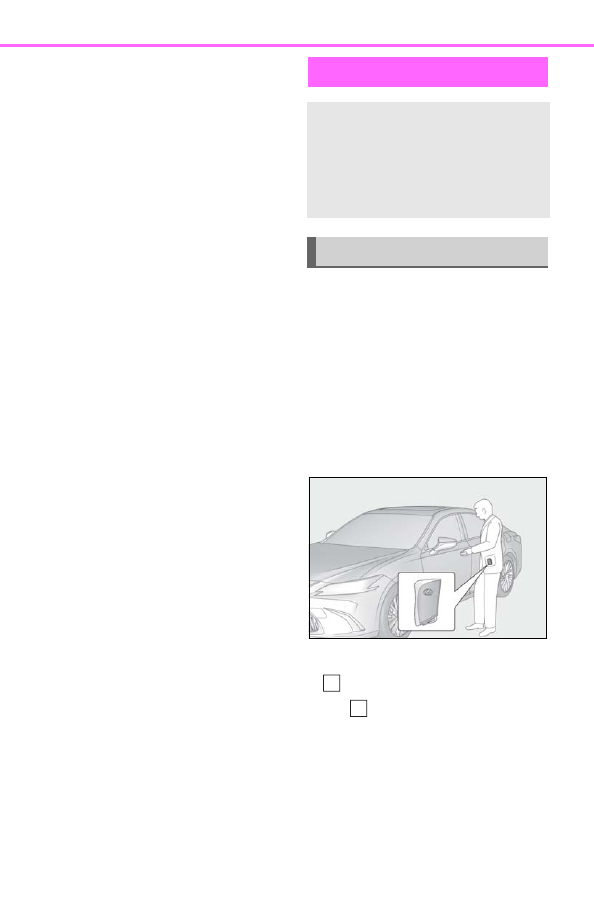LEXUS ES 350 (2019 year). Manual - part 24

374
7-2. Steps to take in an emergency
engine switch in step
3
above.
The engine does not start and modes will be
changed each time the switch is pressed.
(
If you have a set of jumper (or booster)
cables and a second vehicle with a 12-
volt battery, you can jump start your
vehicle using the following procedure.
1
Confirm that the electronic key is
being carried.
When connecting the jumper (or booster)
cables, depending on the situation, the
alarm may activate and doors locked.
(
2
Open the hood. (
3
Connect a positive jumper cable clamp to
on your vehicle and connect the
clamp on the other end of the positive cable to
on the second vehicle.
If the battery is discharged
The following procedures may be
used to start the engine if the bat-
tery is discharged.
You can also call your Lexus dealer
or a qualified repair shop.
Restarting the engine
A
B